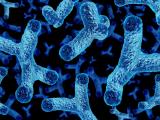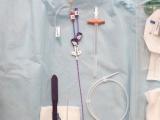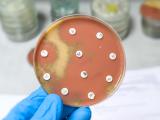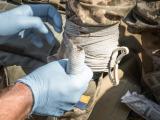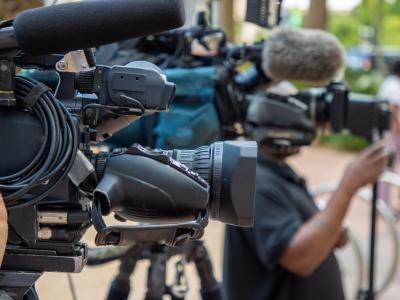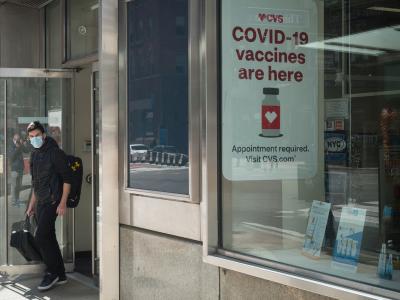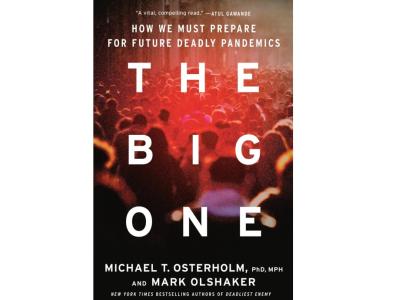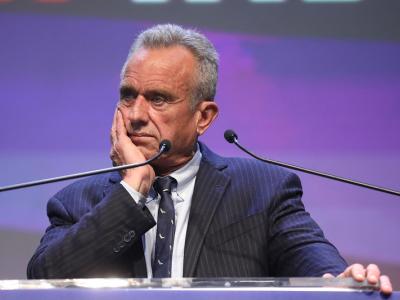Hosam Zowawi, PhD, is a bit of an evangelist for antimicrobial resistance (AMR), and he'll enlist anyone in his cause to get the message out.
When the Saudi-born clinical microbiologist is not in his lab at the University of Queensland in Brisbane, Australia, researching drug-resistant infections, he's talking to school children in the Middle East about the importance of hand hygiene, giving TEDx talks on the threat of superbugs, making videos to promote prudent use of antibiotics, and working with artists to create social media campaigns about the threat of AMR.
For Zowawi, the effort to engage the public, either through scientific papers or Twitter messages, is an important part of the war on superbugs. And it's important to do so in a way that makes a very complex topic approachable. "It's very important to simplify science to the public," Zowawi told an audience last night at the University of Minnesota in Minneapolis. "But it's also important to cultivate the next generation of activists."
In a wide-ranging talk on the AMR threat hosted by Global Minnesota, Zowawi gave an overview of how drug resistance has emerged since the discovery of penicillin, and how it now threatens the medical breakthroughs—like organ transplants and chemotherapy—that were enabled by the introduction of antibiotics. "Today, we are under threat," he said.
The need for rapid diagnostics
While Zowawi mostly deals with drug-resistant pathogens under the microscope, he has seen the human impact of AMR. As an infection-control trainee at a hospital in Jeddah, Saudi Arabia, he witnessed how drug-resistant infections could be deadly for patients undergoing routine operations.
The rapid rise of multidrug-resistant infections in Saudi Arabia and throughout the Middle East led Zowawi and his colleagues to create the Gulf Cooperation Council (GCC) Surveillance Network for Antimicrobial Resistance—a network of labs across the Gulf states that track the spread of AMR bacteria.
In addition to his work on surveillance, Zowawi spoke at length about a particular thrust of his research—the search for ways improve diagnosis of bacterial infections, which he believes could lead to more appropriate use of antibiotics.
"I think what is tangible and achievable in our lifetime is to improve diagnosis," Zowawi told Michael Osterholm, PhD, MPH, who moderated part of the conversation. Osterholm is the director of the Center for Infectious Disease Research and Policy, which publishes CIDRAP News.
The problem, Zowawi explained, is that identifying bacterial infections hasn't changed that much since the days of Louis Pasteur. "We rely still on our senses," he said. For example, microbiologists still grow bacteria samples from patients in a petri dish so they can see and identify them under the microscope. Sometimes they even smell bacterial samples to identify them.
"These practices are basically showcasing how behind we are," Zowawi said. "We haven't really capitalized on the existing technologies that are available to improve upon the current method."
The main problem with the current method is how time-consuming it is. Using a pediatric patient with a bloodstream infection as an example, Zowawi took the audience through the process of diagnosing and identifying a bacterial infection. First, a blood sample is taken. If it comes back positive in 24 hours, clinical microbiologist will then grow the bacteria in a petri dish and identify the pathogen. That takes another 24 hours. Antimicrobial susceptibility testing takes an additional 24 hours.
That's 3 days to understand what's causing the infection and determine what antibiotics should be avoided. In the meantime, doctors have already begun empiric therapy with broad-spectrum antibiotics to fight the infection, relying on observation, experience, and instinct to choose the right drug. "If you look up the word 'empiric' in the dictionary, it's basically guessing," Zowawi said.
And if they want to go even further and understand why the bugs are resistant to certain antibiotics, clinical microbiologists need to conduct molecular tests to identify resistance mechanisms. "It takes days, at least to get the results," Zowawi said.
To speed up this process, Zowawi and his colleagues have developed a test—dubbed "Rapid Superbug"—that searches bacteria for up to 200 genes that make beta-lactamase enzymes, which can disable beta-lactam antibiotics like penicillin and carbapenems. The test can produce results in 3 to 4 hours.
Zowawi believes this technology, combined with rapid point-of-care tests that quickly identify bacterial infections, could cut the time it takes to diagnose and properly treat bacterial infections in half. That kind of innovation would not only save lives but would also reduce the unnecessary use of broad-spectrum antibiotics.
"If we can eradicate the empirical use of antibiotics, I think we can achieve a lot," he said.
Osterholm, who refers to AMR as a "slow-moving, glacial tsunami," agreed that new diagnostic technology will play a key role in reducing the superbug threat, along with new antibiotics and alternative treatments for bacterial infections. But he also reminded the audience of the role they can play. "Do not ask for an antibiotic unless you really need it," he said.





